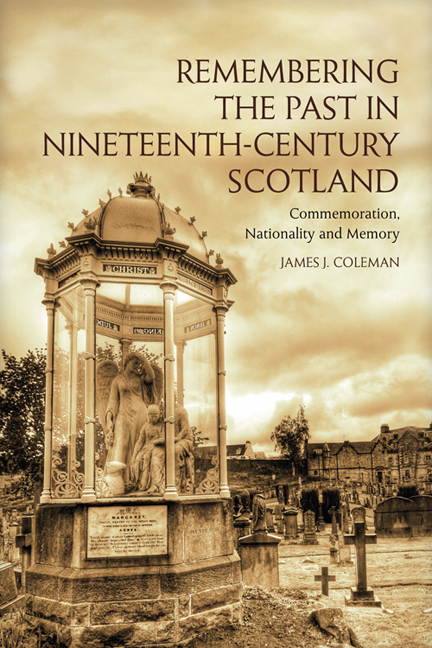Book contents
- Frontmatter
- Contents
- Acknowledgements
- Introduction: The Valley Cemetery
- 1 Nationality, Memory and Commemoration
- 2 Scottish Nationality in the Nineteenth Century
- 3 ‘Not Servile and Conquered, but Free and Independent’: Commemorating William Wallace and Robert the Bruce
- 4 ‘The Highest Position in the Civilised World’: Commemorating John Knox and the Second Reformation
- 5 ‘If They Were Rebels Then, We Are Rebels Now’: Commemorating the Covenanters and the Glorious Revolution
- 6 ‘By the Imprudence of His Ancestors’: Commemorating Jacobitism and Mary Queen of Scots
- 7 ‘Staunch Loyalty to the Flag that Stands for Union’
- Bibliography
- Index
Introduction: The Valley Cemetery
Published online by Cambridge University Press: 05 August 2016
- Frontmatter
- Contents
- Acknowledgements
- Introduction: The Valley Cemetery
- 1 Nationality, Memory and Commemoration
- 2 Scottish Nationality in the Nineteenth Century
- 3 ‘Not Servile and Conquered, but Free and Independent’: Commemorating William Wallace and Robert the Bruce
- 4 ‘The Highest Position in the Civilised World’: Commemorating John Knox and the Second Reformation
- 5 ‘If They Were Rebels Then, We Are Rebels Now’: Commemorating the Covenanters and the Glorious Revolution
- 6 ‘By the Imprudence of His Ancestors’: Commemorating Jacobitism and Mary Queen of Scots
- 7 ‘Staunch Loyalty to the Flag that Stands for Union’
- Bibliography
- Index
Summary
On the north side of the Esplanade at Stirling Castle stands a statue to Robert the Bruce. The statue represents the King in the dignity of victory, looking towards the site of the Battle of Bannockburn, a cautious hand resting on his sheathed sword. He wears an expression described by the Stirling Journal as ‘emphatically peaceful’ yet also somewhat beleaguered, ‘betraying the anxiety undergone in the long and arduous struggle for liberty’. The unveiling of the statue, erected in 1877, was a decidedly civic affair. A lengthy procession marched through Stirling, replete with members of the town guilds, council, voluntary societies and other burgh worthies, as well as the two committees charged with raising the statue. Accompanying them, a representative of the Earl of Elgin carried what was purported to be Bruce's sword. Upon arrival at the Esplanade, a prayer was offered, the statue was unveiled, and numerous speeches were made. Then, with the ceremony concluded, no fewer than three separate banquets were enjoyed across the burgh.
It had taken seven years, and committees in both London and Stirling, to gather sufficient funds for the Stirling Bruce statue. The original intention had been to cast the statue in bronze, but insufficient cash meant that the statue had to be sculpted in stone. Not that this deterred the gathered VIPs from extolling the virtues of Robert Bruce, Bannockburn, and the King's legacy regarding Scotland and Britain. In formally handing the statue over to the care of the Corporation of Stirling, General Sir James Alexander of the Stirling committee said that the figure it represented signified ‘an example of manly perseverance and courage in a noble cause’. Having accepted the statue, William Christie, Provost of Stirling, listed the manifold realms of achievement in which the Scots had excelled, before going on to say:
There are no more gratifying pages in the history of Scotland than those which relate to the sacrifice which she has made for, and the contests she has waged – and successfully waged – on behalf of civil, political, and religious liberty and independence. In giving a king to England she became an integral part of Great Britain, and has increased and stimulated the influence and power of the nation, and shed additional lustre upon the British name and fame.
- Type
- Chapter
- Information
- Remembering the Past in Nineteenth-Century ScotlandCommemoration, Nationality, and Memory, pp. 1 - 6Publisher: Edinburgh University PressPrint publication year: 2014



